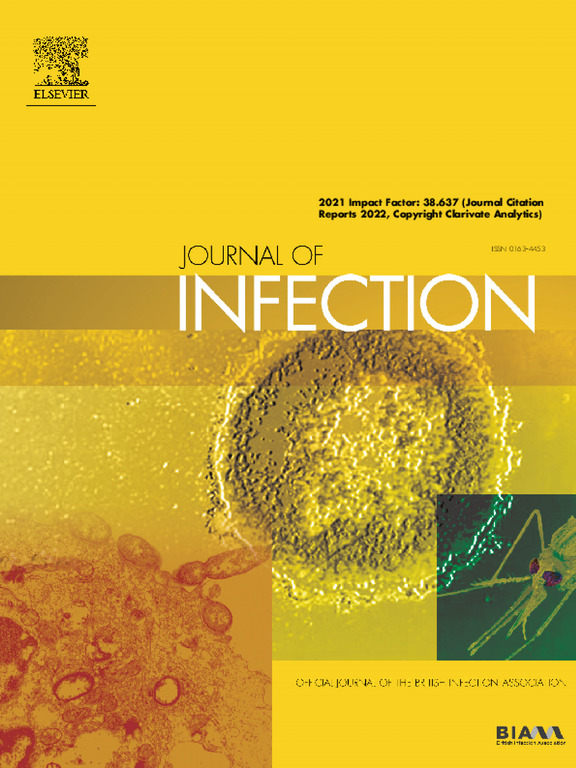Climatic drivers of infectious diarrheal disease epidemics in China: An empirical dynamic modeling analysis of 21 million cases
IF 14.3
1区 医学
Q1 INFECTIOUS DISEASES
引用次数: 0
Abstract
Infectious diarrheal diseases continue to impose a heavy public health burden in China, despite significant advancements in sanitation and economic development. While existing evidence has linked climate factors to the dynamics of these diseases, the heterogeneous climatic conditions and complex nonlinear interactions among meteorological variables give rise to intricate epidemic patterns that complicate the identification of causal drivers underlying the observed spatial and temporal variability in disease incidence. To address this gap, we conducted a nationwide study across 365 city-level regions in China from 2005 to 2022. Based on high-resolution surveillance data and meteorological records, we applied an empirical dynamic modeling framework. We inferred causal links between climatic drivers and six notifiable infectious diarrheal diseases using convergent cross-mapping, and further assessed the dynamic impacts of these drivers through multivariate forecast improvement and scenario exploration across different climatic zones. Our results reveal that, except for cholera, infectious diarrheal diseases are predominantly influenced by temperature, relative humidity, and sunshine hours. Temperature generally promotes the incidence of typhoid fever, bacillary dysentery, and other infectious diarrhea, while the influence of relative humidity and sunshine hours varies with environmental context. This study not only characterizes the epidemiological trends of infectious diarrhea over nearly two decades but also demonstrates the feasibility of using EDM to uncover dynamic nonlinear interactions in climate–disease systems. By integrating empirical dynamic modeling into public health frameworks, our approach provides a scalable and effective tool for disentangling complex climate-disease interactions in a warming world, thereby informing more tailored public health interventions in response to climate change.
中国传染性腹泻病流行的气候驱动因素:2100万病例的实证动态建模分析。
尽管中国在卫生和经济发展方面取得了重大进展,但感染性腹泻疾病继续给中国造成沉重的公共卫生负担。虽然现有证据已将气候因素与这些疾病的动态联系起来,但异质性的气候条件和气象变量之间复杂的非线性相互作用产生了复杂的流行病模式,使确定所观察到的疾病发病率时空变异性背后的因果驱动因素变得更加复杂。为了解决这一差距,我们在2005年至2022年期间对中国365个市级地区进行了全国性研究。基于高分辨率监测数据和气象记录,我们应用了经验动态建模框架。我们利用收敛交叉制图方法推断了气候驱动因素与6种传染性腹泻疾病之间的因果关系,并通过不同气候区的多变量预测改进和情景探索进一步评估了这些驱动因素的动态影响。我们的研究结果表明,除霍乱外,传染性腹泻疾病主要受温度、相对湿度和日照时数的影响。温度一般会促进伤寒、细菌性痢疾等感染性腹泻的发生,而相对湿度和日照时数的影响随环境不同而不同。这项研究不仅描述了近二十年来感染性腹泻的流行病学趋势,而且还证明了使用EDM揭示气候-疾病系统中动态非线性相互作用的可行性。通过将经验动态建模整合到公共卫生框架中,我们的方法为在变暖的世界中解开复杂的气候-疾病相互作用提供了一种可扩展和有效的工具,从而为更有针对性的公共卫生干预措施提供信息,以应对气候变化。
本文章由计算机程序翻译,如有差异,请以英文原文为准。
求助全文
约1分钟内获得全文
求助全文
来源期刊

Journal of Infection
医学-传染病学
CiteScore
45.90
自引率
3.20%
发文量
475
审稿时长
16 days
期刊介绍:
The Journal of Infection publishes original papers on all aspects of infection - clinical, microbiological and epidemiological. The Journal seeks to bring together knowledge from all specialties involved in infection research and clinical practice, and present the best work in the ever-changing field of infection.
Each issue brings you Editorials that describe current or controversial topics of interest, high quality Reviews to keep you in touch with the latest developments in specific fields of interest, an Epidemiology section reporting studies in the hospital and the general community, and a lively correspondence section.
 求助内容:
求助内容: 应助结果提醒方式:
应助结果提醒方式:


